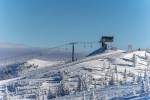Mountain Meadows site of infamous 1857 massacre
Springtime arrives swiftly in the little valley of Mountain Meadows in southwestern Utah. It paints the grassy fields with fresh green and splashes of bright wildflowers.
Surrounded by hills forested with pinyons and junipers, Mountain Meadows is a place whose peacefulness belies the dreadful event that took place there in 1857: a desperate siege and brutal mass murder. This was the site of the infamous Mountain Meadows Massacre, which took 120 lives and left an indelible black mark on Utah’s history.
Named a National Historic Landmark in 2011, Mountain Meadows offers glimpses of tough frontier times and the circumstances that contributed to the massacre. Both battlefield and graveyard, the 2,500-acre site sits just off state Route 18, 32 miles north of St. George, Utah, and about 150 miles from Las Vegas. Now owned by the Church of Jesus Christ of Latter-day Saints, the historic site memorializes those who died there.
To reach the site, follow Interstate 15 north 120 miles to St. George. Exit the freeway at Bluff Street. Turn left to reach Route 18, a scenic roadway that parallels the historic Mormon Trail, part of the Old Spanish Trail. The highway runs past spectacular Snow Canyon State Park and the turnoff to lovely Pine Valley.
The well-marked turnoff to the massacre site is on the left side of the highway about 30 miles from St. George. Another turnoff at milepost 31 takes visitors to the Men and Boys Memorial installed in 2011.
The main site includes several historical markers or memorials erected at various times. At the main turnoff, a paved spur road leads to a parking area. Start your stroll into the past on the paved trail from the parking area, pausing to peruse an exhibit explaining a related memorial in Arkansas. The trail takes you to a wooded knoll with an overview of Mountain Meadows.
The ill-fated Fancher-Baker wagon train, which was headed to Southern California, camped below the knoll in September 1857. In lush pastures, the party rested up for a grueling journey across the desert. The train included families from Arkansas and a few from Missouri and Illinois, areas where early Mormons had been treated badly.
Unlike many emigrant trains, the Fancher-Baker group was well-armed and well-equipped with supplies and livestock. It was the last emigrant train traveling that season through Mormon-controlled Deseret, as Utah was then known to its settlers.
Unfortunately for the travelers, their timing was poor. The Utah settlements were on high alert because of news that the federal government was sending an army to take control of the region then governed by the Mormons. Settlers were ordered to stockpile grain and other foods. Mormons established in outlying areas such as Nevada were called back to Utah. The challenges of frontier life coupled with fear for the future produced a state of war hysteria.
Local militia attacked the wagon train and a five-day siege ensued. Running low on ammunition and water, the Fancher-Baker party accepted an offer of safety in exchange for laying down its arms and surrendering its livestock.
Separated from the women and young children, the men and boys from the traveling party were escorted away by the militiamen. The militia then turned on the prisoners and, intending to leave no witnesses to the attack, killed at least 120 men, women and older children. Only 17 of the youngest children survived.
The dead were hastily buried where they fell. Livestock, wagons, supplies and baggage were dispersed locally or auctioned off. The surviving children were given to Mormon families.
Such terrible secrets could not be concealed for long. Federal investigations led to the reburial of the dead and accusations against the guilty. All but one surviving child was returned to the remaining families.
Only one man was brought to full justice: Mormon leader John D. Lee was convicted and executed by firing squad at Mountain Meadows in 1877.
Margo Bartlett Pesek’s Trip of the Week column appears on Sundays.




























